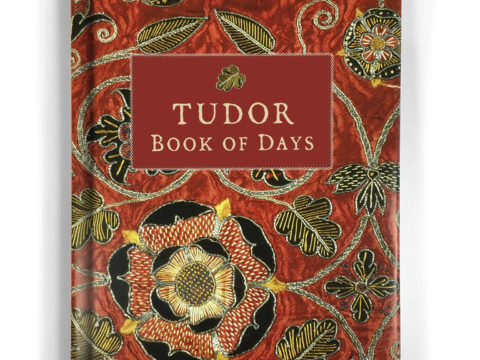Katherine Willoughby: Life Story
Chapter 7 : Religious Freedom
For Katherine Suffolk, the advent of a government led by Somerset was a wonderful outcome. He was a reformer and a man with whom she was on good terms. Her other friend, John Dudley, Lord Lisle, became Earl of Warwick, and the dowager-queen’s brother, William Parr, was elevated to the Marquisate of Northampton.
Katherine’s sons – Henry, Duke of Suffolk, and Lord Charles Brandon – took part in the coronation, and became close personal friends of the young king.
King Henry was hardly cold in his grave before the widowed queen remarried – to Somerset’s younger brother, Sir Thomas Seymour, Lord Sudeley and Lord Admiral. At what point Katherine became aware of her friend’s romance is not known – nor whether she encouraged it. She certainly saw the funny side, naming her new stallion and mare Seymour and Parr respectively. What we do know is that it was partly Katherine Suffolk’s urging that prompted Queen Katherine's publication of her religious work ‘Lamentations of a Sinner’ in November 1547.
The work is distinctively Protestant – although the queen had not yet embraced the Calvinist doctrines of pre-destination that Katherine was now drawn to. The preface to ‘Lamentations’ included words from the duke of Somerset’s secretary, William Cecil, a man with whom Katherine was on the best of terms, the link created by their religious sympathies probably enhanced by him being her neighbour in Lincolnshire.
Dowager-queen Katherine bore a daughter, Mary Seymour, in September 1548, but died within a few days of the birth. In March of the following year, Sir Thomas Seymour was executed for treason. Relying on Katherine’s friendship with Katherine Parr, and himself, he left the responsibility for Mary’s upbringing to Katherine. Sadly, he was mistaken in his expectation of her reaction. Katherine made it very clear that she resented the responsibility.
To be fair to Katherine, the actual relatives of the little girl – her paternal uncle, Somerset, and her maternal uncle, Northampton, refused to make any contribution to the costs of the child’s upbringing. Katherine wrote repeated letters to Somerset and his wife, who had once purported to be her friend, but no funds were forthcoming, even from the estate of the late Thomas. Meanwhile the Somersets and Northampton grew fat on the bonanza of crown lands that the council had shared out amongst its members on King Henry’s death.
It may be that Katherine, rich on paper, had cash flow problems – she appears to have pawned her jewels and, in order to increase her income, went shares with Cecil in a merchant shipping venture. Nevertheless, it is hard not to suspect that she was less full of Christian charity, than she was of eagerness to promote her religious opinions.
The years of Edward VI’s reign were positive for Katherine and other committed Protestants. She played a prominent part in encouraging conformity to the new prayer books, introduced n 1549 and then in 1552, and the abolition of many of the traditional rites of the Catholic church. The seventeenth century historian, John Strype, who had access to the papers of Cecil’s secretary, wrote that Katherine was
‘very active in seconding the efforts of government to abolish superfluous Holy Days, to remove images and relics from the churches, to destroy shrines and other monuments of idolatry and superstition, to put an end to pilgrimages, to reform the clergy, to see that every church had provided, in some convenient place, a copy of the large Bible, to stir up the bishops, vicars and curates to diligence in preaching against the usurped authority of the Pope; in inculcating upon all the reading of the Scriptures’.
She founded a grammar school at Spilsby, encouraged the government to look favourably on the French and Dutch ‘stranger’ Protestant churches in London, and her views were so well known that printers and publishers dedicated Protestant works to her – for example the collection of Hugh Latimer’s sermons, published by Some and Bernher.
In 1549, Somerset’s rule was challenged by two rebellions – the Prayer Book rebellion, centred in the West Country, was essentially religious in nature, and sought to return England to Catholicism. This was too far away to have much impact on Katherine, but that led by Robert Kett in Norfolk, which was largely related to economic concerns, was on her doorstep. It was, however, effectively put down by John Dudley, Earl of Warwick.
Somerset was now ousted from government and imprisoned. Cecil asked Katherine to intercede for the duke. Her response was that she was worried that her intercession might make matters worse for him, so she hesitated to go to London, although she protested that if she were sure her involvement would help, she would do whatever she could. She also told Cecil that she had tried to persuade Sir William Parr, Marquis of Northampton, and brother of her old friend Katherine Parr, to abandon the Earl of Warwick and return his trust to Somerset, but her advice, it appeared, was in vain.
Katherine Willoughby
Family Tree




